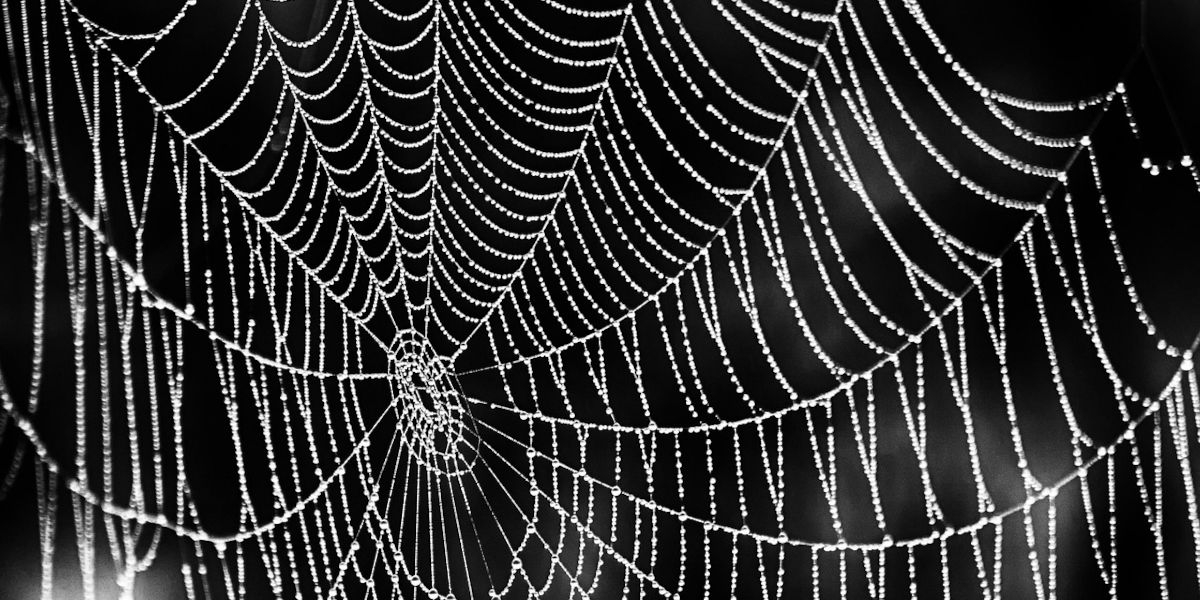From fairy tales to comic books, spiders have been the subject of fascination and fear for generations. Whether you're an admirer or one who shies away from these eight-legged creatures, there's no denying the awe-inducing intricacy of a spider’s web. Today we delve into the world of arachnids: more specifically, we aim to answer the question - how do spiders spin webs? By understanding arachnid biology and the science of spider silk, we take a closer look at the intricate design and utterly complex process behind the formation of a spider's web.
The Art and Science of Web Building: Understanding Arachnid Biology
Spiders are renowned for their art of web-making. Creating some of the most remarkable structures in the animal kingdom, they represent a spectacular feat of biological engineering. To comprehend how spiders spin webs, it becomes essential to delve into understanding arachnid biology. Spiders, unlike other species, possess specialized appendages known as spinnerets located at the rear end of their body.
These small, flexible organs are remarkable silk-spinning factories, each producing a unique type of silk thread for a specific purpose. The types of silk range from highly adhesive ones used for ensnaring prey to finer, non-sticky silk used in web construction.
The mechanism of silk production is fascinating. The raw material of the silk is a substance called fibroin, a protein created within the spider's silk glands. When the spider wishes to produce silk, it releases a controlled amount of fibroin liquid into its spinnerets. This liquid travels down a long duct, meeting an acidic substance that aids in its solidification, transforming it into a solid yet flexible silk thread as it exits the spinnerets.
The Incredible Science of Spider Silk
Understanding the science of spider silk requires appreciating its unique physical properties. Spider silk is perhaps the most underrated yet extraordinary biological material known. It may seem fragile at first glance, but it's remarkably sturdy - five times stronger than steel of the same diameter, more elastic than rubber, and capable of stretching up to five times its original length without breaking. This fascinating combination of strength and elasticity makes it exceptionally resilient and versatile.
The unique structure of spider silk at the molecular level is responsible for its special properties. It is made up of two types of protein structures: amorphous (randomly arranged) segments, which provide elasticity, and crystalline (organized) segments, which contribute to its strength. This mixture of amorphous and crystalline segments allows the silk to stretch under stress then return to its original state without lying slack, an attribute vital in achieving its web-building functionality.
The Artistry and Complexity of Spinning a Web
Spiders are renowned for their unique ability to create intricately woven webs, but each web isn’t just a random assortment of crisscrossing threads. Far from it, the structure of a spider web is a demonstration of artistry, complexity, and engineering, all bundled into an elegant design.
The process begins by the spider extruding silk from its spinnerets, special glands located at the end of its abdomen. The silk hardens almost instantly once it comes into contact with air. Using their rear legs, spiders draw out the silken thread, creating both sticky and non-sticky strands, strategically positioned to catch prey or hold the structure of the web.
The Science Behind Spider Silk
The real magic, or rather science, lies in the spider silk itself. This unassuming thread possesses astonishing properties that give it an unparalleled advantage over other materials. Unlike most other substances, spider silk exhibits both high tensile strength and impressive elasticity, making it stronger than steel and stretchier than nylon - qualities which no other natural or artificial material can boast.
The silk's tensile strength is derived from the presence of crystalline structures within the thread. A complex protein structure, these subunits are responsible for the exceptional strength and durability of spider silk, making it possible for the web to hold its form in the face of strong winds, harsh weather, or even the struggle of an entangled prey.
Design of the Web
Beyond the materials, however, the design of the web itself is fundamental to its function. Spiders usually start their webs with a single thread, a ‘bridge line’ which provides the basic frame. They then create a series of radial threads radiating from the center, akin to the spokes of a bicycle. Then, they spin the classic spiral pattern, with sticky silk intersecting the radial threads at regular intervals. The sticky threads are used to capture prey, while the radial lines provide structural support.
Interestingly, most spider species have a unique web design of their own, which can serve as a signature of sorts, helping scientists identify the spider based on its web alone.
The Marvel of Biomimicry
The science behind the formation of spider webs and the properties of spider silk has greatly influenced the field of materials science. Biomimicry, the design and production of materials and systems modelled on biological entities, has taken a page out of the spider's book, leading to breakthroughs in developing materials that have similar resilience and elasticity.
In essence, the humble spider web, alongside its architect, continues to inspire, inform, and fascinate scientists and researchers across the globe. Far from just a simple entanglement designed to catch prey, the web of life spun by spiders is an elegant testament to nature’s engineering prowess, the perfect blend of artistry, complexity, and intricate science.




